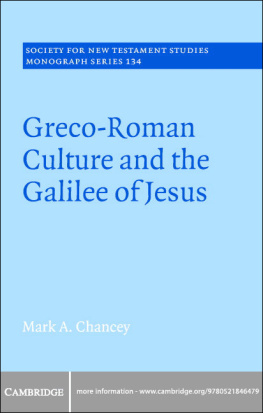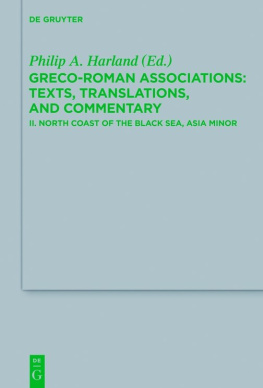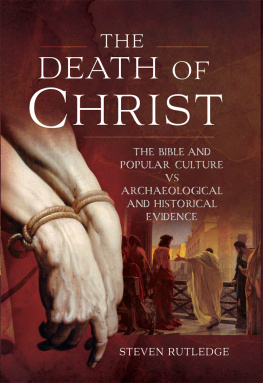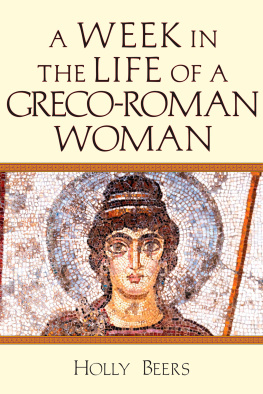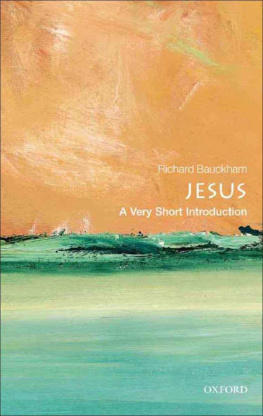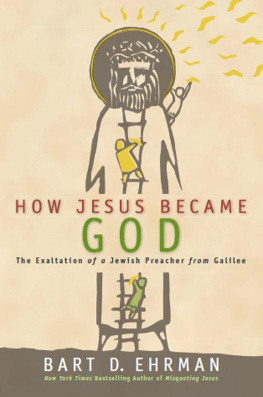Greco-Roman Culture and the Galilee of Jesus , the first book-length investigation of this topic, challenges the conventional scholarly view that first-century Galilee was thoroughly Hellenized. Examining architecture, inscriptions, coins, and art from Alexander the Great's conquest until the early fourth century CE, Chancey argues that the extent of Greco-Roman culture in the time of Jesus has often been greatly exaggerated. Antipas's reign in the early first century was indeed a time of transition, but the more dramatic shifts in Galilee's cultural climate happened in the second century, after the arrival of a large Roman garrison. Much of Galilee's Hellenization should thus be understood within the context of its Romanization. Any attempt to understand the Galilean setting of Jesus must recognize the significance of the region's historical development as well as how Galilee fits into the larger context of the Roman East.
MARK CHANCEY is Assistant Professor in the Deparment of Religious Studies at Southern Methodist University, Dallas. He is author of The Myth of a Gentile Galilee (2002, SNTS Monograph No. 118).
General Editor: John M. Court
CAMBRIDGE UNIVERSITY PRESS
Cambridge, New York, Melbourne, Madrid, Cape Town, Singapore, So Paulo
Cambridge University Press
The Edinburgh Building, Cambridge CB 2 2 RU , UK
Published in the United States of America by Cambridge University Press, New York
www.cambridge.org
Information on this title: www.cambridge.org/9780521846479
Mark A. Chancey 2005
This book is in copyright. Subject to statutory exception
and to the provisions of relevant collective licensing agreements,
no reproduction of any part may take place without
the written permission of Cambridge University Press.
First published in print format 2005
ISBN-13 978-0-511-35202-7 mobipocket
ISBN-10 0-511-35202-6 mobipocket
ISBN-13 978-0-521-84647-9 hardback
ISBN-10 0-521-84647-1 hardback
Cambridge University Press has no responsibility for the persistence or accuracy of URLs for external or third-party internet websites referred to in this book, and does not guarantee that any content on such websites is, or will remain, accurate or appropriate.
For Tracy Anne
Preface
The need for a new synthesis and analysis of the evidence for Greco-Roman culture in Galilee during the time of Jesus became apparent to me while working on my study on Galilee's population, The Myth of a Gentile Galilee . In particular, I was struck at the importance of context, both geographical and chronological, for understanding the region as a whole as well as the significance of individual artifacts and buildings. When reading about particular archaeological finds, I wanted to know if they were typical or atypical within Galilee, the larger area of Palestine, and elsewhere in the Roman East, as well as within their own time periods. I also wanted to contextualize investigations of Galilee within the larger scholarly conversation about Romanization. In this work, I have tried to collect and present the archaeological data from Galilee in a concise, accessible form, while also directing the reader to parallel finds from other regions and to standard reference works on specific categories of material culture. Fuller bibliographies for individual sites can often be found in my previous book, Myth . I have written primarily for scholars who are interested in understanding the setting of Jesus, but I also hope this book will prove useful to scholars specializing in Early Judaism, Syro-Palestinian archaeology, and the Roman Near East.
When discussing specific sites, I have sometimes used the Greek name and sometimes the Hebrew, depending on which is better known. My transliteration of Hebrew names usually follows the general-purpose style outlined in Patrick H. Alexander et al., eds., The SBL Handbook of Style for Ancient Near Eastern, Biblical, and Early Christian Studies (Peabody, Mass.: Hendrickson, 1999), 2829. Thus, khet is typically represented by h or kh and alef and ayin by a ; underdots are omitted. I have provided map coordinates for sites not included on the map, when possible. As for my use of Josephus, translations are typically from the Loeb edition.
I am greatly indebted to the people who read portions of the manuscript and offered suggestions for improvement: Tracy Anne Allred, Jeremy Bakker, Joshua Ezra Burns, Jaime Clark-Soles, Richard W. Cogley, Johan Elverskog, Steven Fine, Sean Freyne, Adam Marshak, Dale B. Martin, Byron R. McCane, Eric M. Meyers, and Adam Porter. I also owe special thanks to Mordechai Aviam, who helped me gather data on Galilee's inscriptions; Eric M. Meyers, Steven Fine, and David Hendin, for providing me with access to forthcoming works; and C. Thomas McCollough, James F. Strange, and Morten Hrning Jensen, all of whom provided me with copies of or information from conference papers. I continue to profit from the wise counsel of Eric M. Meyers and E. P. Sanders, my mentors at Duke University, and Richard W. Cogley, my department chair at Southern Methodist University. Eric M. Meyers first introduced me to the joys of archaeological fieldwork. The Dorot Foundation and the Endowment for Biblical Research helped fund my participation in the Sepphoris Regional Project in the 1990s, and the SMU University Research Council provided grants for research in the libraries of Duke University and for travel to Italy to study Roman architecture. A Research Fellowship from SMU allowed me to take a sabbatical semester in the fall of 2003 to devote to writing. This book would not have been possible without the invaluable assistance of Billie Stovall of the Fondren Library Interlibrary Loan Office. Katharina Brett, my editor, has been an extremely helpful source of guidance and advice, and I am grateful to John Court for the opportunity to contribute again to the SNTS series. I am extremely thankful for the careful attention my work received from copy-editor Tony Rainer. The members of my family continue to provide me with welcome support. My students are a perpetual source of inspiration.

